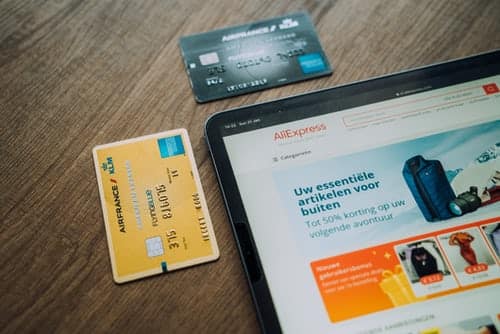Telemedicine has revolutionized healthcare by allowing patients and healthcare providers to connect easily and efficiently using technology. With the rapid development of mobile technology, smartphones have become essential tools in this transformation. In this article, we explore the effective ways to use smartphones for telemedicine, discuss the benefits and challenges, and examine the future possibilities for this innovative healthcare approach.
The Role of Smartphones in Telemedicine
Smartphones have become ubiquitous in our daily lives, and their role in telemedicine cannot be overstated. These devices have the potential to significantly improve patient care by offering easy access to medical services, real-time communication, and the ability to monitor health data.
A lire en complément : How to Configure Your Smartphone for Optimal Use in Low-Light Photography?
The evolution of mobile technology has enabled smartphones to support various telemedicine apps, making healthcare services more accessible. Mobile apps designed for telemedicine allow patients to schedule appointments, access their medical records, and even consult with healthcare professionals through virtual consultations. This ease of access has improved patient outcomes, particularly for those living in remote areas or with limited mobility.
Another significant advantage of using smartphones in telemedicine is the ability to collect and analyze patient data in real-time. Mobile devices can track vital signs, monitor chronic conditions, and provide immediate feedback to both patients and healthcare providers. This real-time data collection helps in making informed decisions and delivering personalized care.
Avez-vous vu cela : Can You Use Your Smartphone to Control a Smart Thermostat?
Enhancing Patient Access to Healthcare
One of the most effective ways to use smartphones for telemedicine is by enhancing patient access to healthcare services. With mobile devices, patients can easily consult with healthcare providers without the need for in-person visits. This convenience is particularly beneficial for individuals in rural or underserved areas, where access to medical facilities may be limited.
Telemedicine apps on smartphones enable patients to schedule virtual consultations, reducing the need for travel and wait times. These apps often include features such as video calls, messaging, and file sharing, making it easy for patients to communicate with their healthcare providers. This improved accessibility can lead to better patient outcomes and higher satisfaction rates.
Smartphones also facilitate access to mental health services. Many telehealth apps offer counseling and therapy sessions via video calls or messaging, providing a convenient alternative for those who may feel uncomfortable with face-to-face sessions. This increased access to mental health care can help address the growing demand for mental health services in the United States and beyond.
Moreover, smartphones can provide patients with educational resources and reminders about their health conditions and treatment plans. Healthcare providers can use mobile apps to send personalized messages, reminders for medication, and updates on their patients’ progress. This continuous engagement helps patients stay informed and adhere to their treatment plans, ultimately improving their health.
Real-Time Monitoring and Data Collection
Another effective way to use smartphones for telemedicine is through real-time monitoring and data collection. Mobile devices equipped with health monitoring features can track various health metrics, such as heart rate, blood pressure, glucose levels, and physical activity. This data can be automatically transmitted to healthcare providers, enabling them to monitor their patients’ health continuously.
The real-time data collected by smartphones allows for timely interventions and adjustments in treatment plans. For example, a diabetic patient can use a smartphone app to monitor their blood glucose levels, and if the readings are abnormal, their healthcare provider can be alerted immediately. This proactive approach helps prevent complications and ensures that patients receive the necessary care promptly.
Additionally, real-time monitoring is beneficial for managing chronic conditions. Patients with chronic diseases, such as hypertension or asthma, can use mobile apps to track their symptoms and medication adherence. This data can be shared with their healthcare providers, allowing for a more comprehensive understanding of the patient’s condition and enabling better-informed decisions about their care.
The integration of wearable devices with smartphones further enhances real-time monitoring capabilities. Devices like smartwatches and fitness trackers can collect data on various health parameters and sync this information with telemedicine apps. This seamless integration provides a holistic view of the patient’s health, making it easier for healthcare providers to deliver personalized care.
Improving Communication Between Patients and Healthcare Providers
Effective communication is crucial in healthcare, and smartphones play a vital role in facilitating this communication. Telemedicine apps on smartphones enable patients to communicate with their healthcare providers through various channels, such as video calls, messaging, and emails. This constant and convenient communication helps build a strong patient-provider relationship, which is essential for effective patient care.
Video consultations are one of the most popular ways to use smartphones for telemedicine. They allow patients to have face-to-face interactions with their healthcare providers without the need for in-person visits. This visual component enhances the quality of communication, as healthcare providers can observe non-verbal cues and better assess the patient’s condition.
Messaging apps also play a significant role in telemedicine. These apps allow patients to ask questions, report symptoms, and receive guidance from their healthcare providers in real-time. This instant communication helps address concerns promptly and ensures that patients receive the support they need. Additionally, messaging apps can be used to share medical records, test results, and other important documents, streamlining the communication process.
Furthermore, smartphones enable healthcare providers to collaborate more effectively. Telemedicine apps can facilitate communication between different healthcare professionals, allowing for a multidisciplinary approach to patient care. For example, a primary care physician can consult with a specialist through a telemedicine app to discuss a patient’s case and develop a comprehensive treatment plan. This collaborative approach improves patient outcomes and ensures that patients receive the best possible care.
Challenges and Future Possibilities
While smartphones offer numerous benefits for telemedicine, there are also challenges that need to be addressed. One of the primary challenges is ensuring data security and patient privacy. The sensitive nature of medical data requires robust security measures to protect it from unauthorized access and breaches. Healthcare providers and app developers must prioritize data security and implement encryption and other security protocols to safeguard patient information.
Another challenge is the digital divide. Not all patients have access to smartphones or the internet, which can limit the reach of telemedicine services. Efforts must be made to bridge this gap and ensure that telemedicine is accessible to all, regardless of socioeconomic status or geographic location.
Moreover, there is a need for standardized regulations and guidelines for telemedicine. The rapid growth of telehealth services has outpaced the development of regulatory frameworks, leading to disparities in the quality and accessibility of care. Policymakers must work towards creating comprehensive regulations that ensure the safety, effectiveness, and equity of telemedicine services.
Despite these challenges, the future of telemedicine using smartphones holds immense potential. Advances in mobile technology, such as artificial intelligence and machine learning, can further enhance telemedicine services. For example, AI-powered chatbots can provide instant responses to patient queries, while machine learning algorithms can analyze health data to predict potential health issues and recommend preventive measures.
Furthermore, the integration of telemedicine with other emerging technologies, such as virtual reality and augmented reality, can create new possibilities for patient care. For instance, virtual reality can be used for remote rehabilitation and physical therapy, while augmented reality can assist healthcare providers in remote surgeries and diagnostics.
In conclusion, smartphones have become indispensable tools in the realm of telemedicine. They enhance patient access to healthcare services, enable real-time monitoring and data collection, and improve communication between patients and healthcare providers. While there are challenges to overcome, the future possibilities for telemedicine using smartphones are vast and promising.
The effective use of smartphones in telemedicine can transform healthcare delivery, making it more accessible, efficient, and personalized. As mobile technology continues to evolve, so too will the ways in which smartphones can be used to improve patient care. Embracing this technology will be crucial for healthcare providers and patients alike as we move towards a more connected and digital healthcare landscape.






